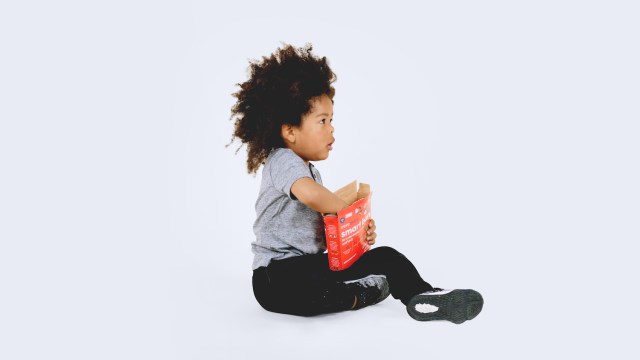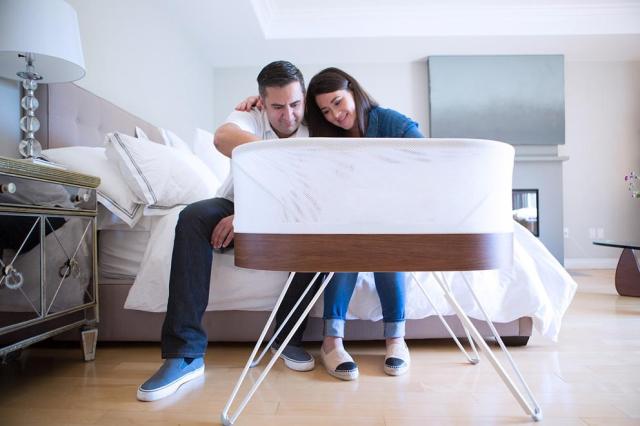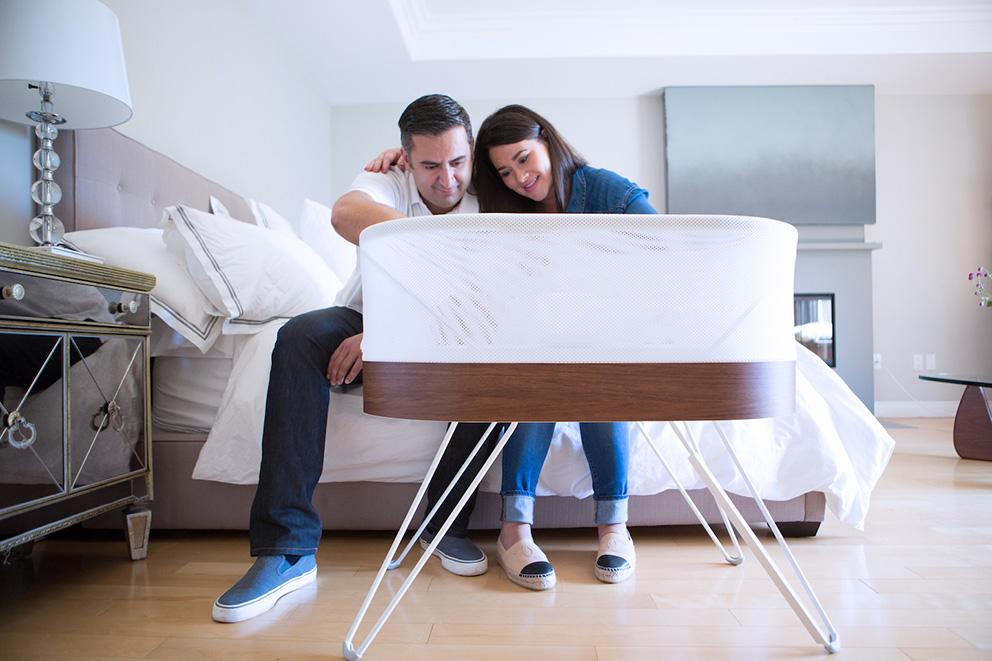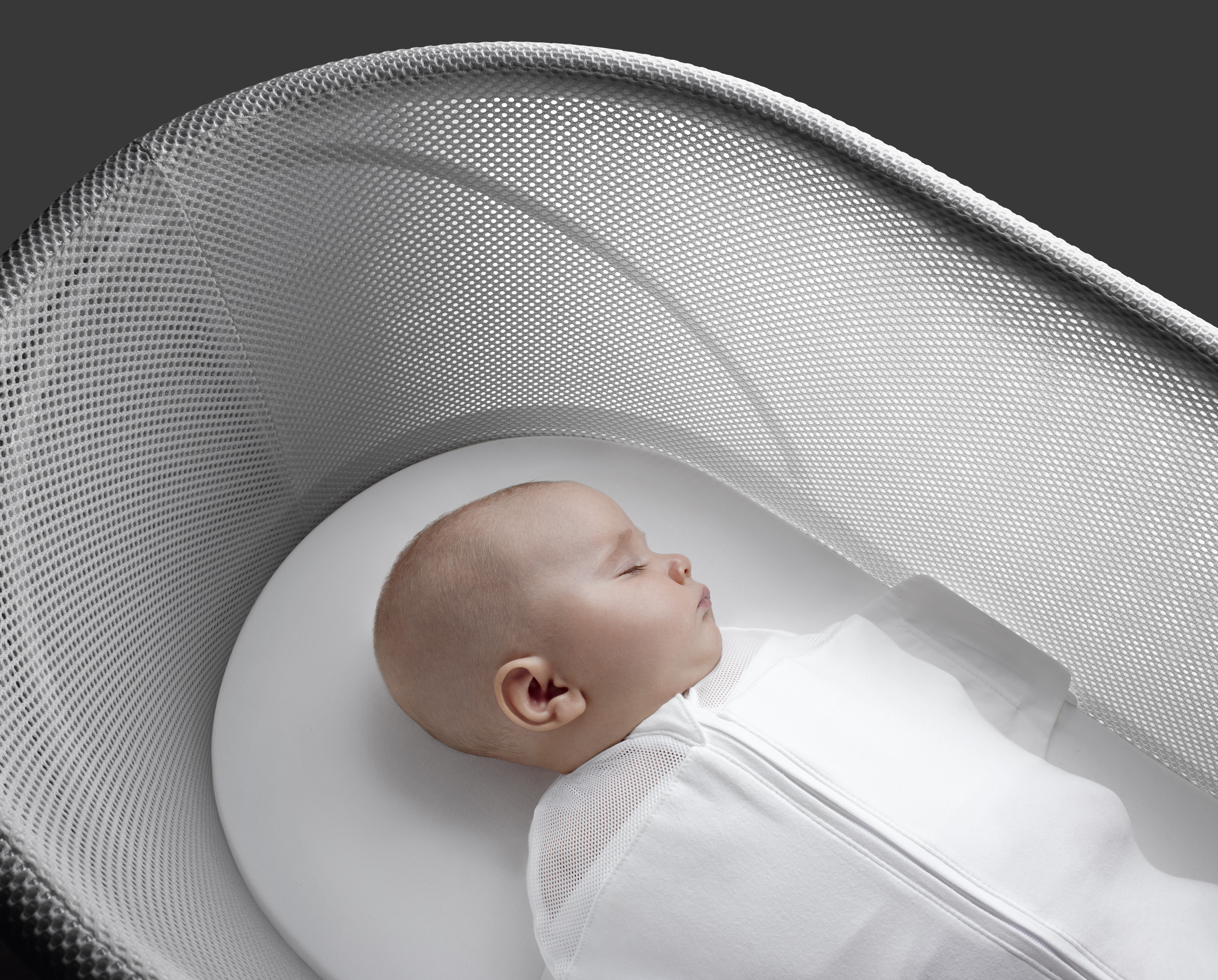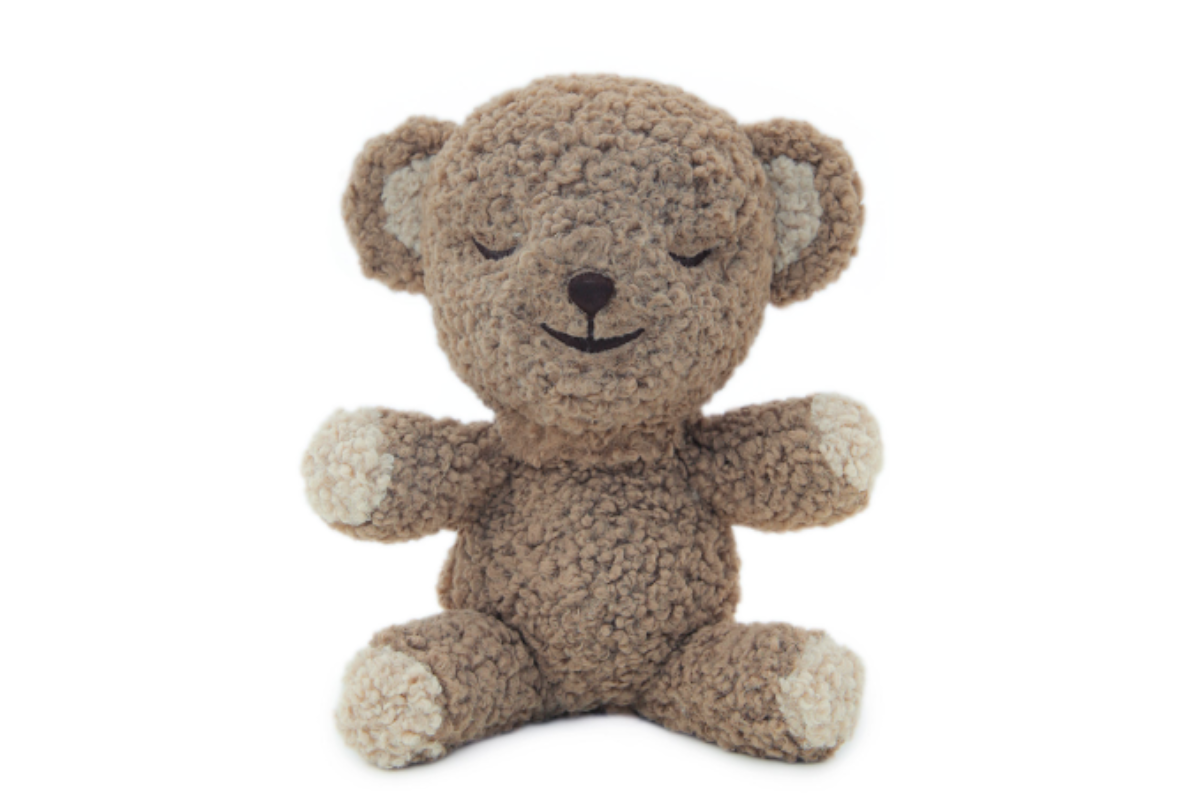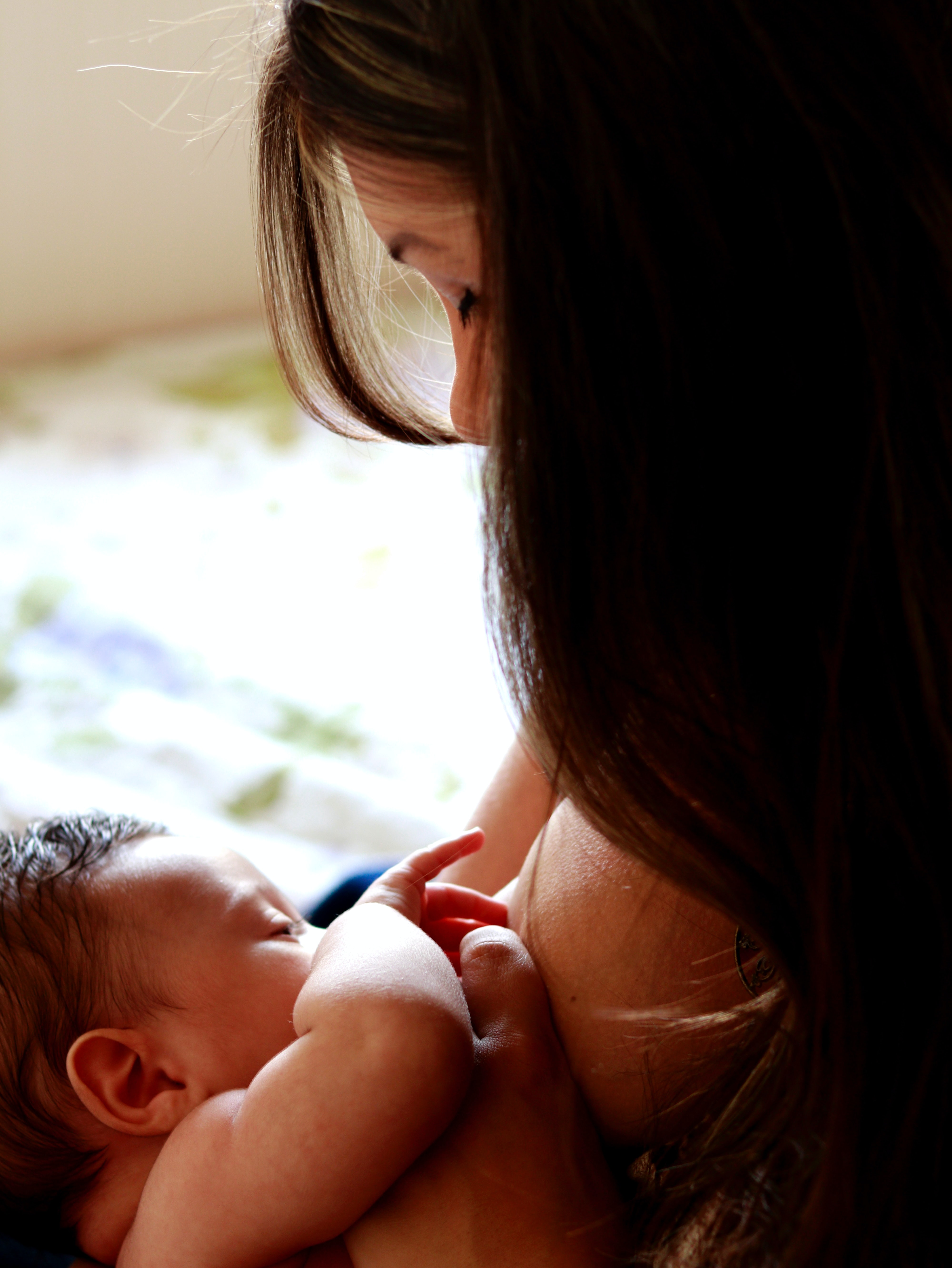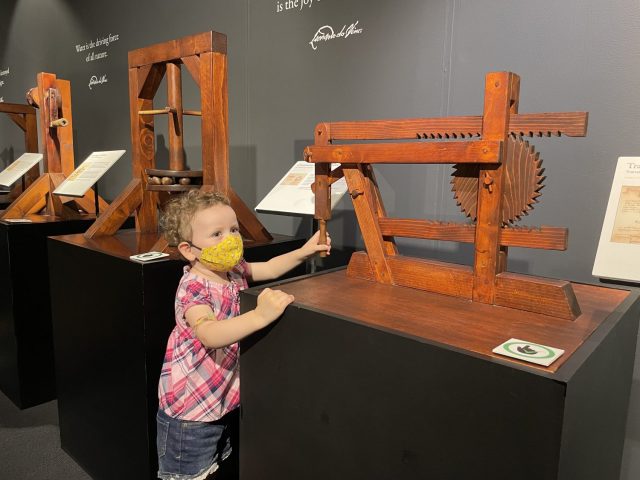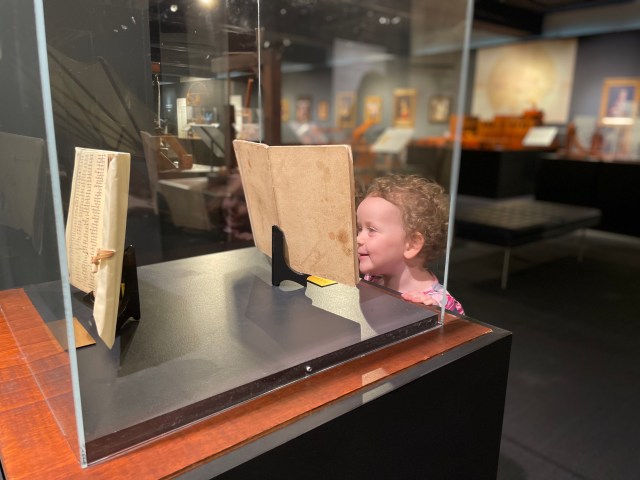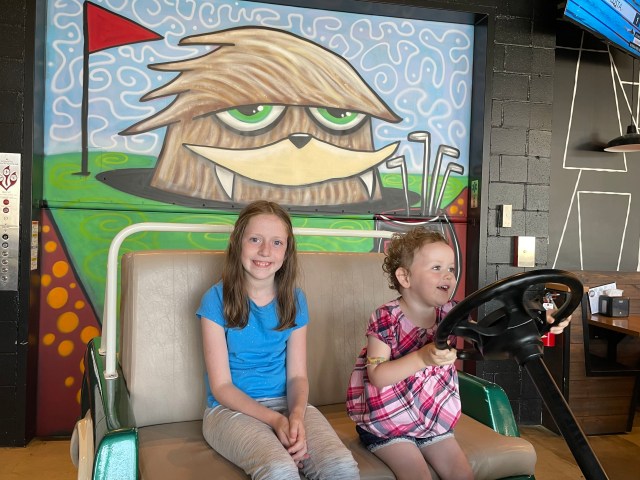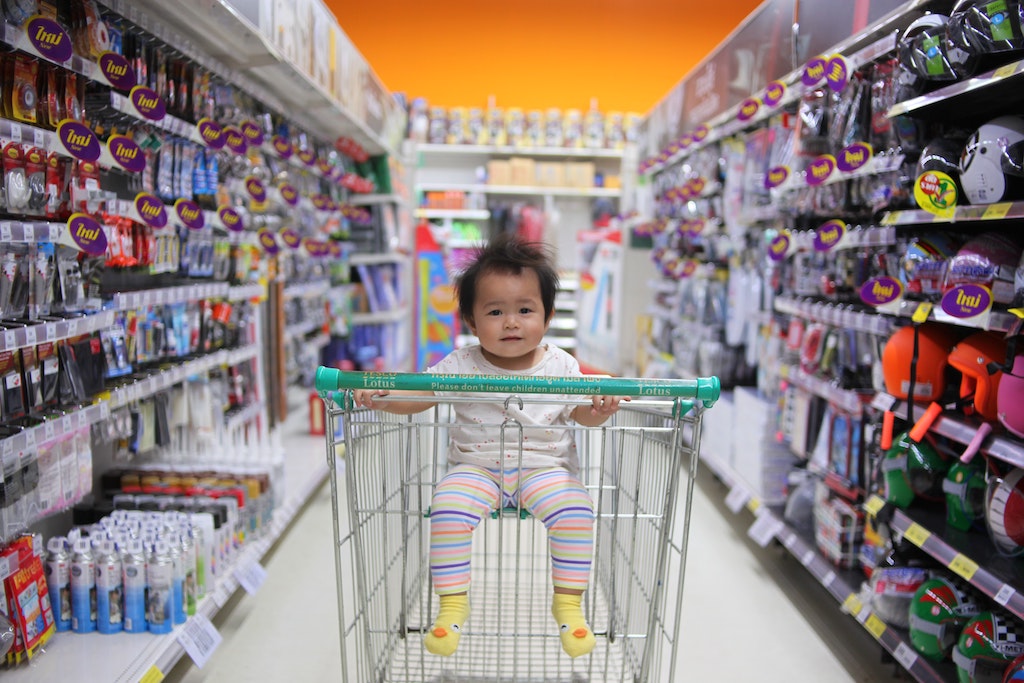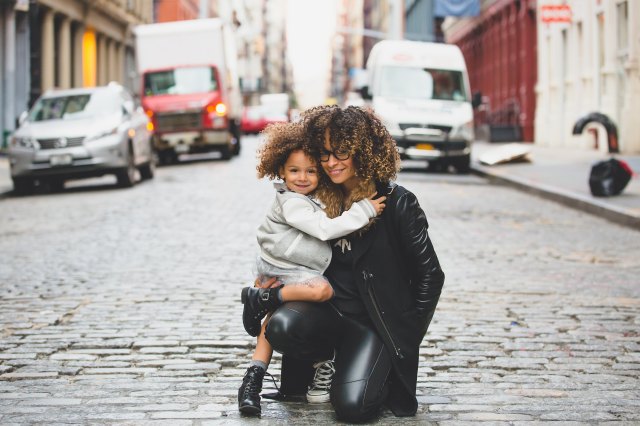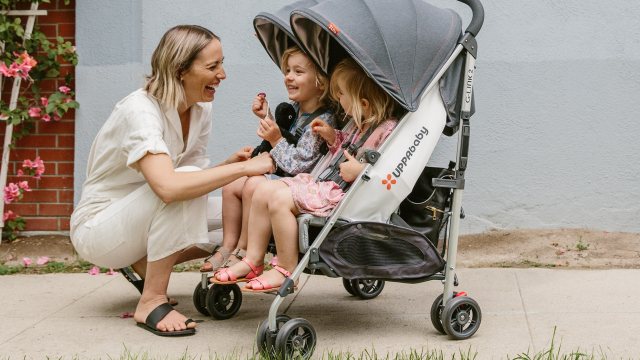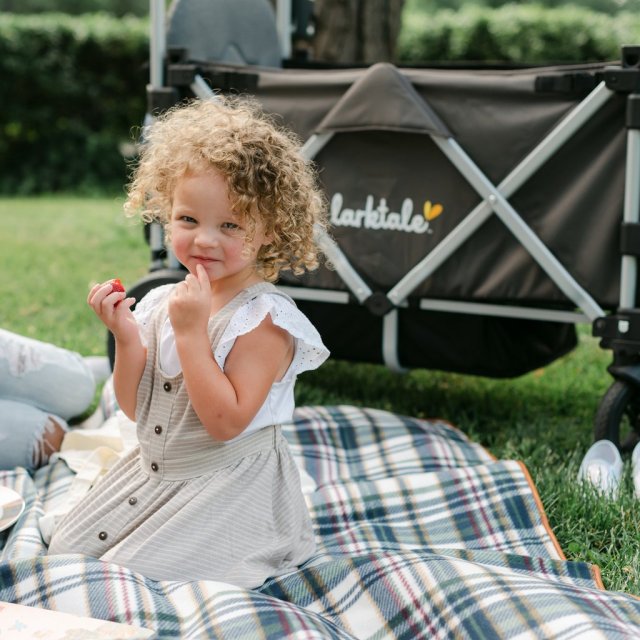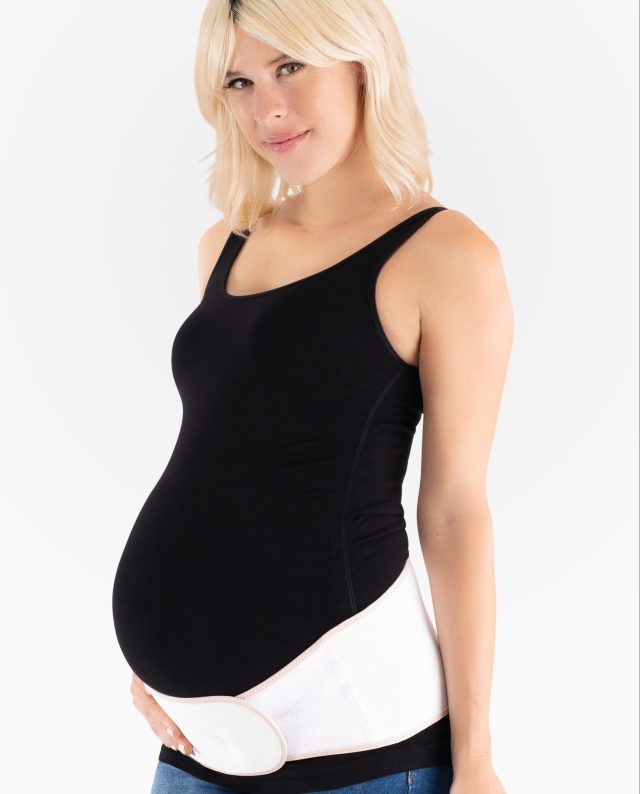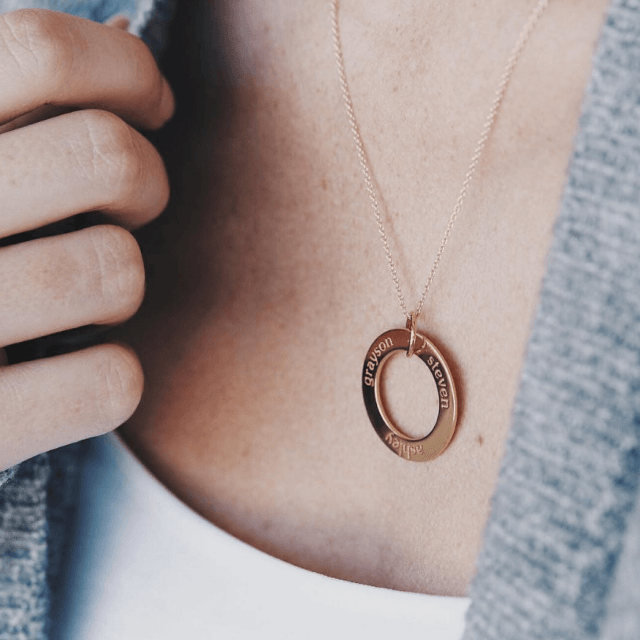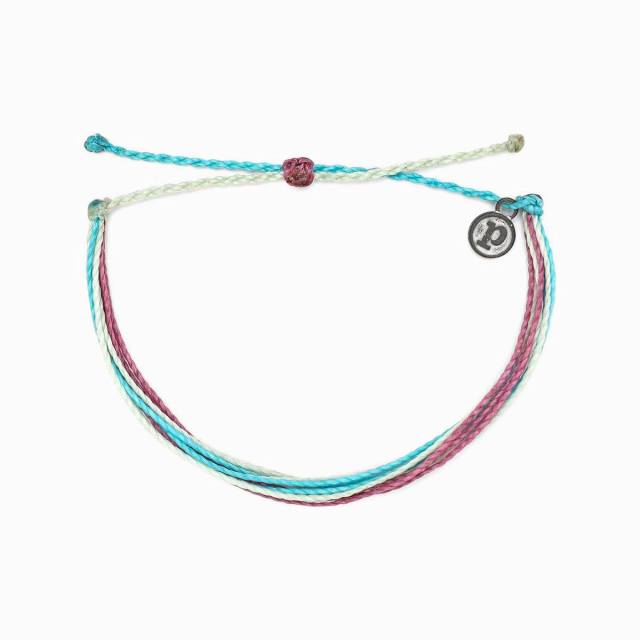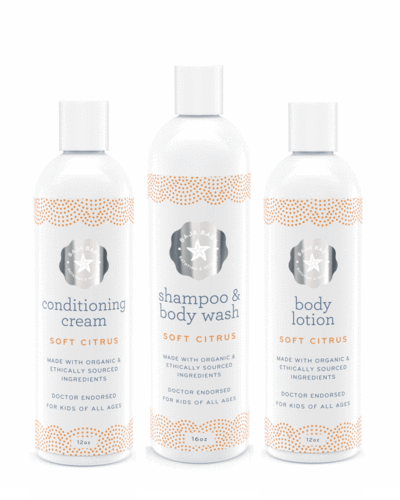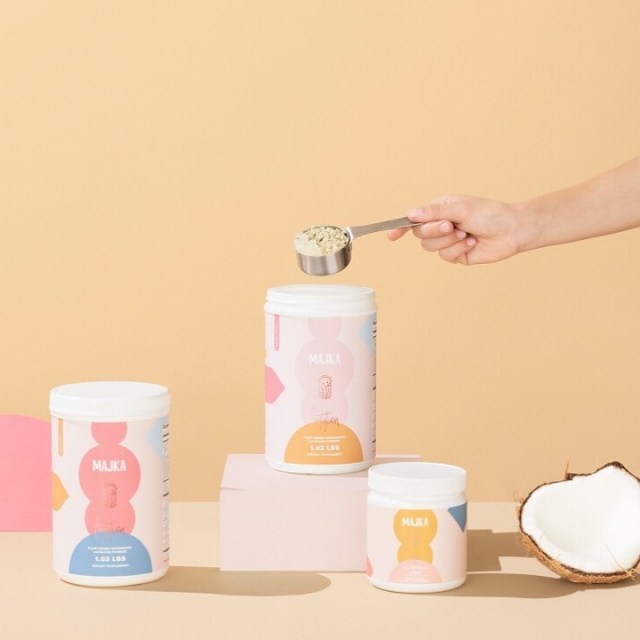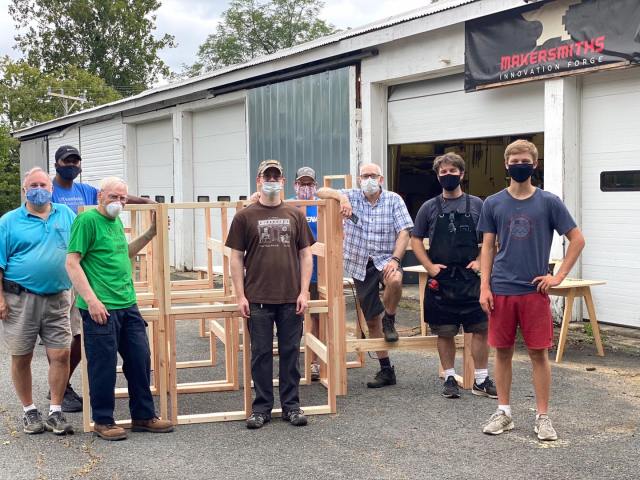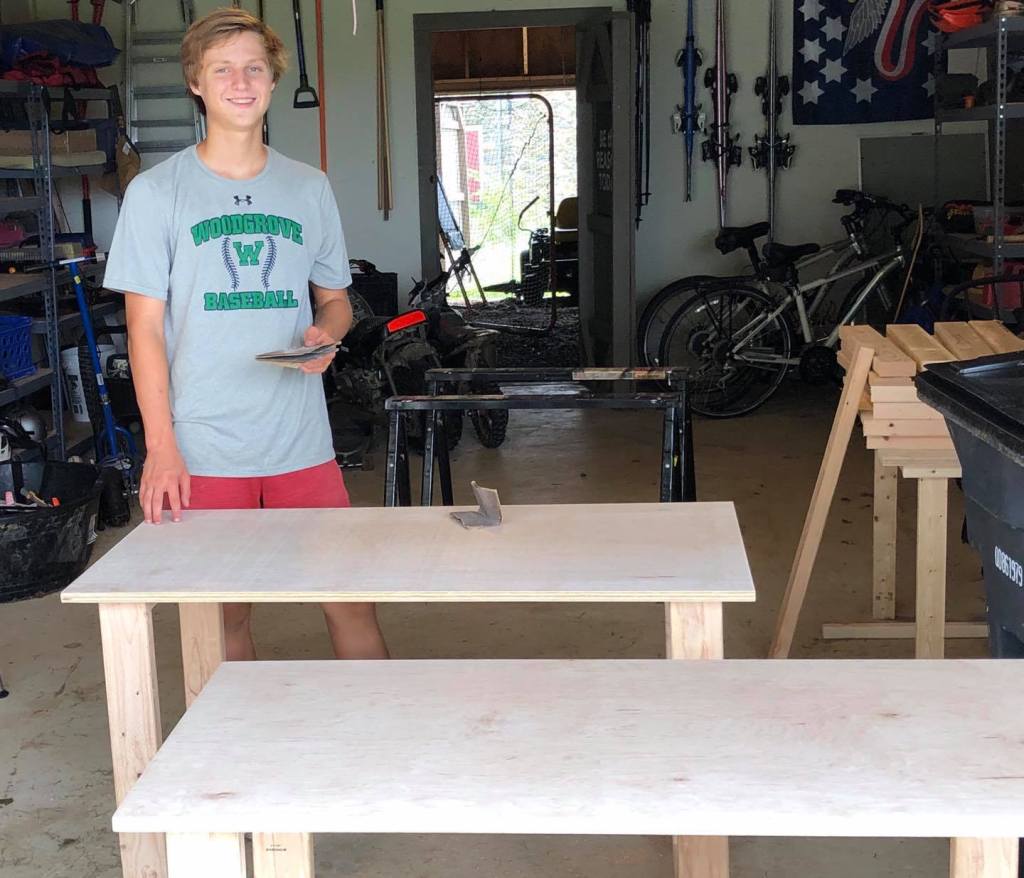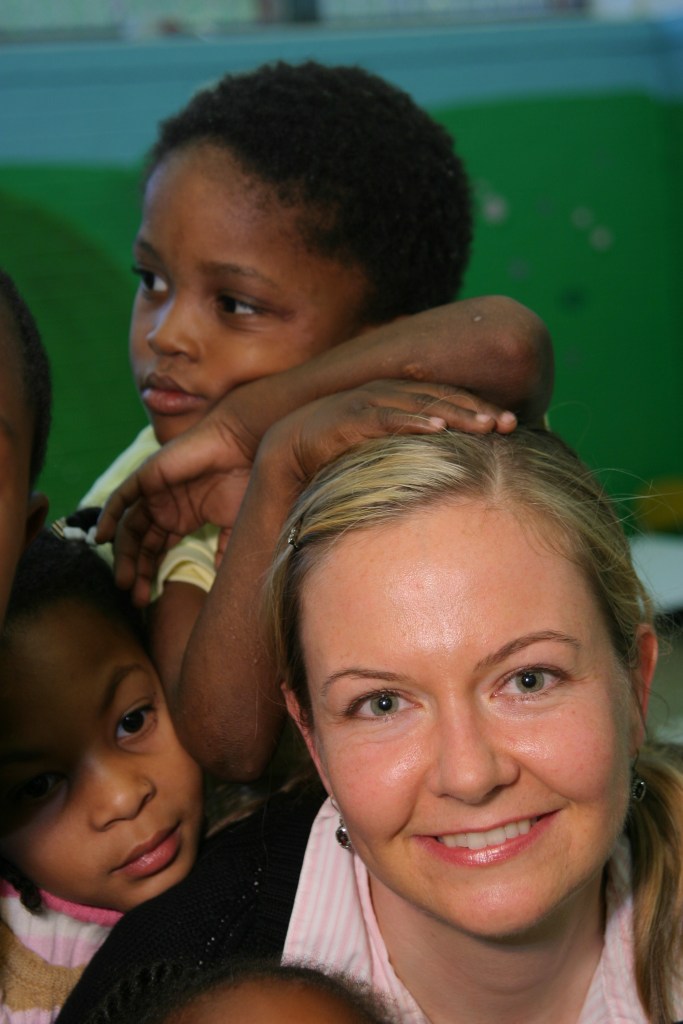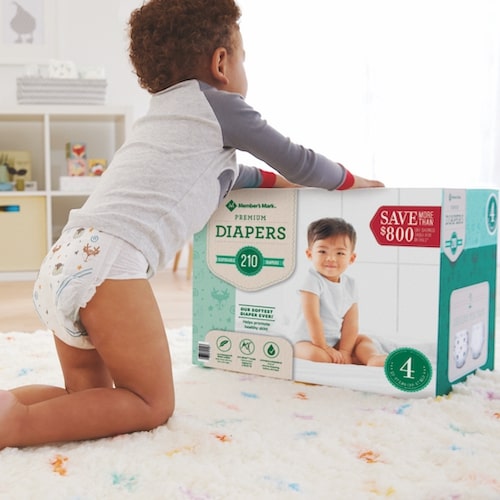Beginning eaters can be a picky bunch, but you and your child will love these new and nutritious foods and drinks designed specifically for babies and toddlers. Packed with healthy ingredients (hello, pea protein, grass-fed bison and bok choy) and available in delicious flavor combinations and kid-friendly packaging (puffs! pouches! smoothie melts! teething wafers!), they’re a win-win. Read on for your baby’s new favorites!
Bone Broth Pouches from Cerebelly
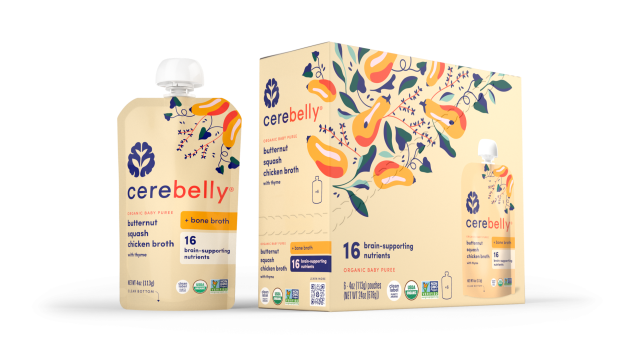
We love Cerebelly for their nutrient-rich, organic kid snacks, and the new bone broth pouches have our mouths watering. Available in three flavors (butternut squash chicken broth with thyme; carrot beef bone broth with rosemary; sweet potato pinto bean with cumin), they're packed with kid-friendly flavors and brain-supporting nutrients including lutein, DHA and protein. Created for kids 11 months and up.
Available at cerebelly.com, $15 for a 6-pack.
Organic Baby & Toddler Snacks from Little Bellies
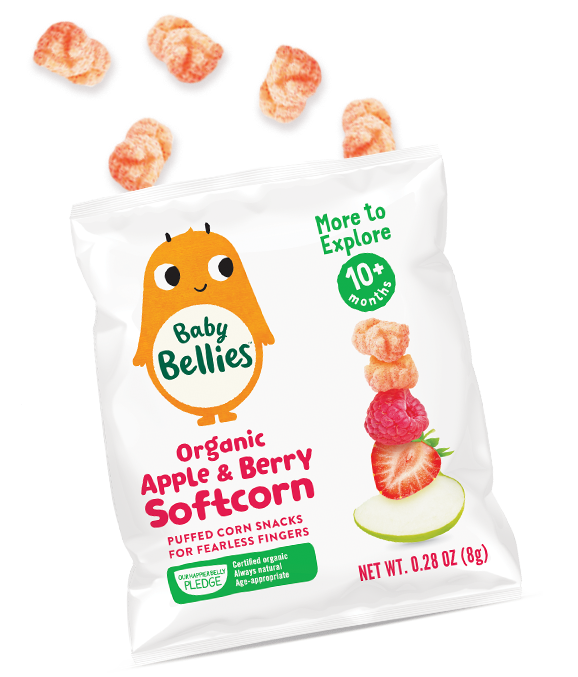
This Australian-owned snack brand makes nutritious, wholesome organic foods for babies and toddlers with no artificial flavors, colors or additives. The line is broken down into two ranges: The Baby Bellies range features snacks for kids 7+ months and 10+ months in kid-friendly flavors and age-appropriate shapes. The Little Bellies range is for kids 12+ months and features animal crackers and tomato sticks. The snacks dissolve so they're easy for littles to eat, and the shapes and sizes are developmentally appropriate so kids can grip them and feed themselves.
Available at littlebellies.com, amazon.com, walmart.com and other retailers.
Happy Baby Made Simple Mixes from Happy Family Organics
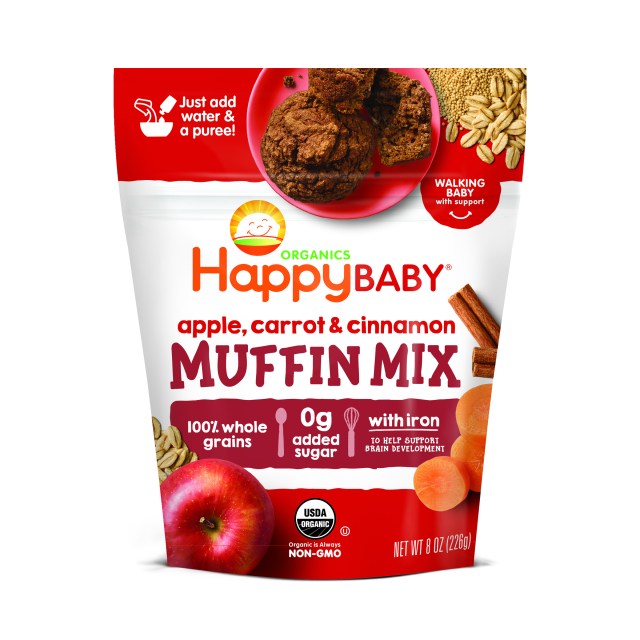
Looking for a nutritious, delicious and easy way to prepare breakfast foods for your babe? Try the apple, carrot and cinnamon muffin mix from Happy Family Organics, or the pancake & waffle mix. You'll whip these up in five minutes flat, so they're perfect for busy mornings or days you want to focus on family time rather than cooking. Both organic, non-GMO mixes are made with 100% whole grains, iron and no added sugar. You only need to add water to prepare the pancake & waffle mix; add water and your child's favorite puree to the muffin mix.
Available at happyfamilyorganics.com, $3.99 for an 8-ounce bag.
Bio Organic Pouches from Holle
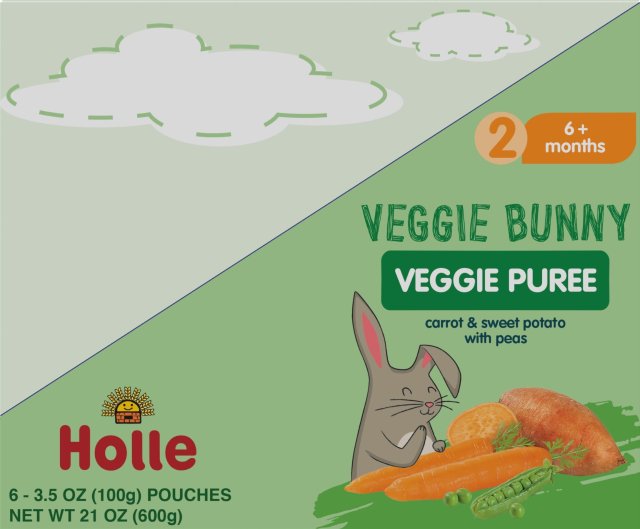
You may know Holle from the brand's baby formula, but this Swiss company has recently launched nutritious fruit and veggie pouches in six flavors, including Veggie Bunny, made with carrot, sweet potatoes and peas. They're not only made with organic ingredients, the products carry the Demeter seal, which means the products meet the highest international standards for holistic, ecological and ethical practices in organic farming.
Available at holleusa.com, $19.99 for a box of six pouches.
Happy Baby Savory Blends from Happy Family Organics
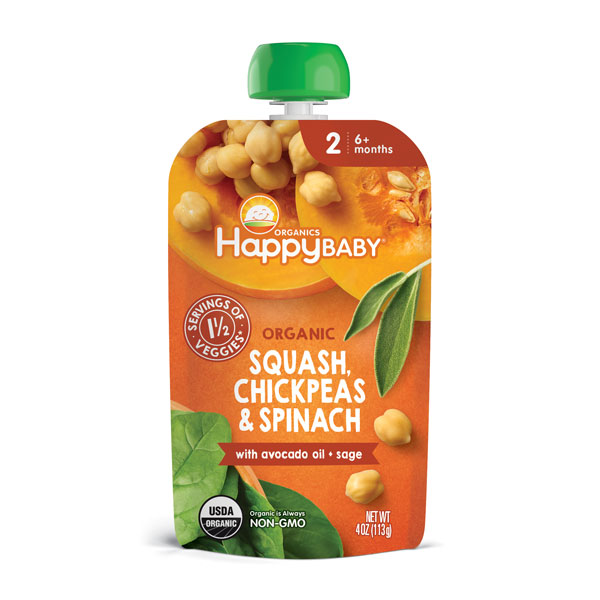
Get your baby's veggies in with these new pouches from Happy Family Organics. Each flavor contains 1.5 servings of organic vegetables in each pouch, more than other leading brands. The veggies are blended with healthy fats, herbs and spices for delicious combinations that expand your child's palate. Each flavor sounds like it came straight off a restaurant menu: Squash, Chickpeas & Spinach with Avocado Oil + Sage; Broccoli & Carrots with Olive Oil + Garlic; Sweet Potatoes with Olive Oil + Rosemary; Purple Carrot & Cauliflower with Avocado Oil + Oregano.
Available at happyfamilyorganic.com, $1.79 per pouch.
Grain-Free Puffs from Serenity Kids
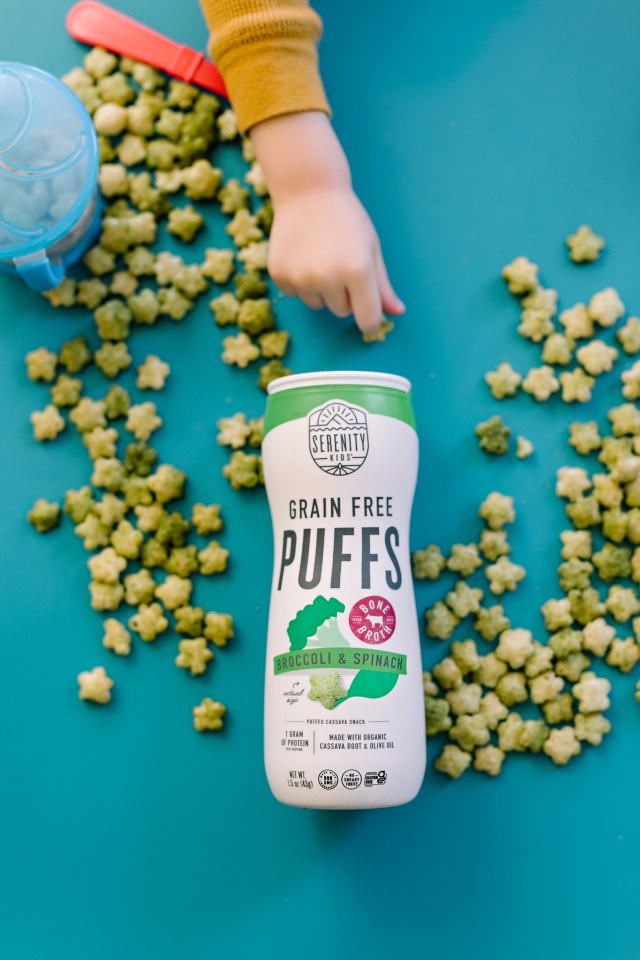
When a snack attack hits, you'll feel good about giving your child these nutrient-rich puffs. They have a slight crunch and chewy texture that kids like, and you'll like that they contain healthy veggies, as well as bone broth for protein and organic olive oil for healthy fats. The three savory flavors are: Broccoli & Spinach Grain free Puffs with Bone Broth, Carrot & Beet Grain Free Puffs with Olive Oil, and Tomato & Mushroom Grain Free Puffs with Bone Broth. These puffs are non-GMO, USDA Organic certified and Certified Gluten-Free.
Available at myserenitykids.com, $32.95 for a six-pack of 1.5-ounce containers.
Smoothie-Inspired Veggie & Fruit Pouches from Cerebelly
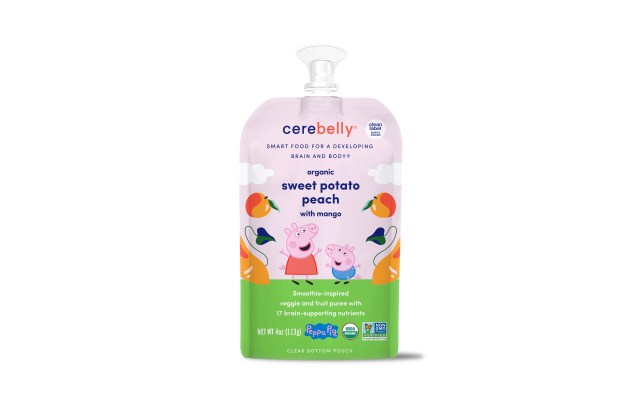
What could be more enticing than a smoothie-inspired puree with Peppa and George Pig on the label? How about the fact that these veggie & fruit pouches are packed with brain-supporting nutrients such as iron, Vitamin B6 and selenium. Available in three mouthwatering flavors (purple carrot blueberry, sweet potato peach, and celery apple kiwi), the Cerebelly x Peppa Pig pouches are sure to be a hit at snack time. The company donates a portion of each product to Baby2Baby to support children in need.
Available at cerebelly.com.
Organic Ancient Grain Puffs from Littlemore Organics
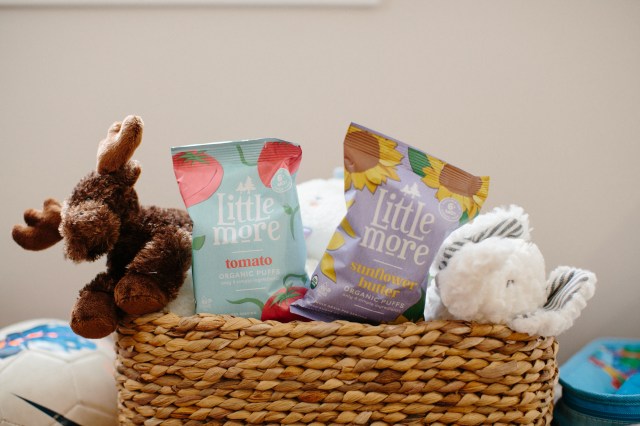
With just four healthy ingredients, these melty puffs from Littlemore Organics are the perfect snack to pop in your diaper bag or serve at home. Available in two savory flavors, sunflower butter and tomato, they contain no added sugar or salt; no corn, rice or gluten; and no peanuts or tree nuts. The line was created by two Boston-based mom friends, one a pediatrician, who set out to develop a packaged snack that was tasty, nutritious and convenient to bring with you. For babies 6 months and up who have started on solids.
Available at littlemoreorganics.com, $29 for 12 0.5-ounce bags.
Yogurt Smoothie Melts from Amara
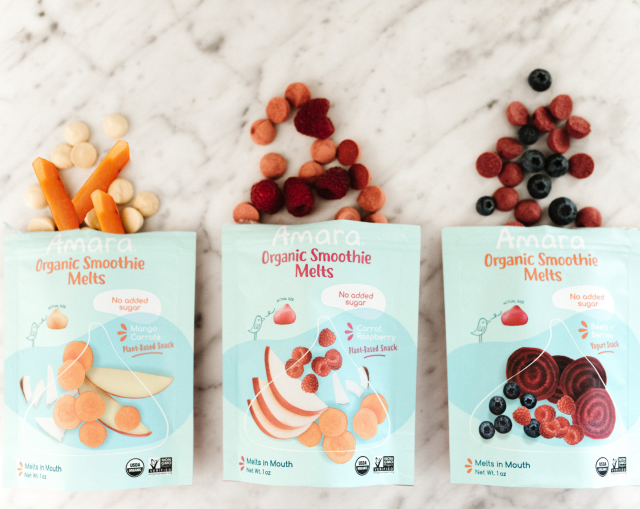
Yogurt smoothie melts with no added sugar? Yes, please! These toddler favorites get their sweetness from organic fruits and veggies, contain no preservatives, and come in a shape that makes it easy for kids to grasp and chew. Available in plant-based yogurt (made with coconut milk) and cow's milk yogurt varieties, these melt-in-your-mouth snacks come in three yummy flavors: Beets 'n' Berries, Carrot Raspberry and Mango Carrots. The resealable bag means you can pop them in your bag for outings. They're recommended for kids 8 months to 4 years.
Available at amaraorganicfoods.com, $29.99 for 6 bags.
Organic Subscription Boxes from Gerber
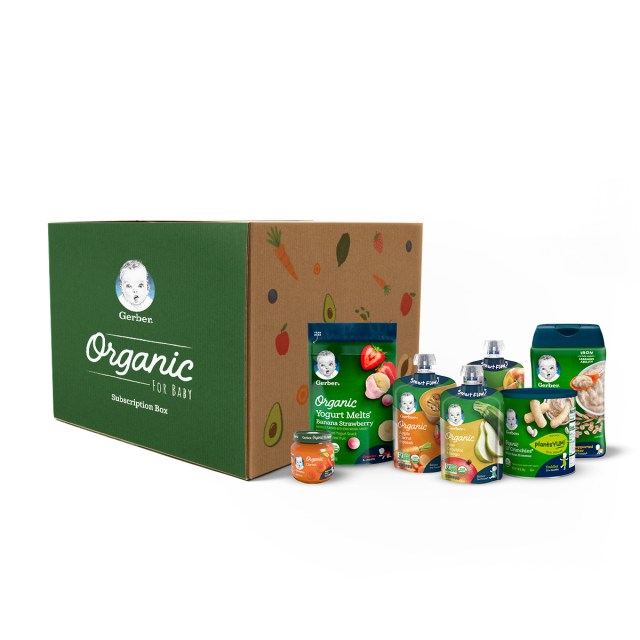
Treat your Gerber baby to delicious, nutritious organic foods delivered right to your door with these subscription box meals created by registered dieticians. The box contents change each month to add variety to your child's diet and respond to their nutritional needs and developmental milestones. Each box is filled with USDA Certified Organic cereals, purees, pouches or snacks.
Available at gerber.com, starting at $69.99 per box/month (under $2 per serving).
Toddler Purees with Bone Broth from Serenity Kids

Want to feed your baby healthy foods that broaden their palate? Try these bone-broth toddler purees from Serenity Kids. Packed with nutrients that help strengthen bones and support digestion and immunity, these toddler puree pouches come in flavorful varieties with no added sugars or preservatives: Turkey Bolognese, Beef Pot Roast and Turmeric Chicken. All are made with pasture-raised meat from small American regenerative family farms, organic bone broth and Certified USDA Organic vegetables and herbs. They're also free of ingredients that contain antibiotics, added hormones, pesticides, fillers, GMOs or major allergens.
Available at serenitykids.com, $29.95/6 pouches of each flavor; $32.95/6-pouch variety pack. Save 20% with a subscription.
Little Dish toddler meals
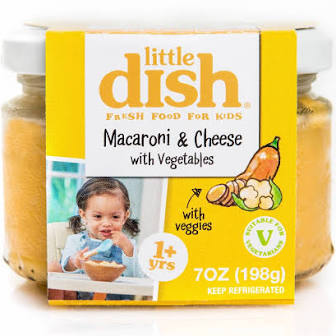
These heat-and-serve toddler meals (designed for kids 1+) come in flavors kids love and are packed full of nutrients. The macaroni & cheese has 8 grams of protein and 3 grams of fiber, along with 1/4 cup of veggies (pureed butternut squash, sweet potato and cauliflower). The pasta & tomato sauce has 6 grams of protein and 5 grams of fiber, along with 1/4 of veggies (carrots, sweet potatoes, red pepper). Both are low in sodium and contain no added sugar, additives or preservatives.
Available at target.com and in the produce section of Target stores, $4.99.
Smart Bars from Cerebelly
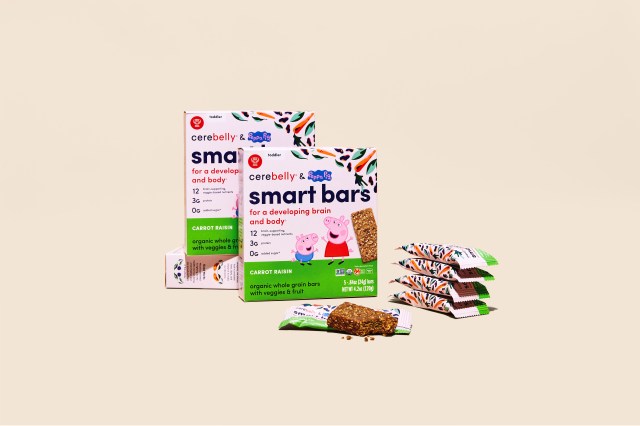
With 3 grams of protein, no added sugar and 10 brain-supporting nutrients, Cerebelly's Smart Bars are the snack you'll feel good about feeding your toddler. Think your child might need convincing to try something new? Two of the new flavors feature kid favorites Peppa Pig and George Pig on the package. Cerebelly was created by a neurosurgeon and mom of three to deliver age-optimized nutrition to children's growing brains. The bars in the Peppa Pig collaboration are carrot raisin and blueberry banana sweet potato. The bars also come in apple kale and strawberry beet. Read more about the Cerebelly X Peppa Pig Smart Bars.
Available at cerebelly.com, from $3.74 for a five-pack.
Plant-Based Complete Nutrition for Toddlers from Else Nutrition

This nutritional drink is free of dairy, soy, gluten, corn syrup and GMOs. What it's full of is minimally processed plant-based ingredients, whole foods and 20 vitamins and minerals your child needs to support their growth and development after they turn one. The main ingredients are organic almond butter, organic buckwheat flour and organic tapioca maltodextrin.
Available at elsenutrition.com, $36 for a 22-ounce container.
Organic Puffed Corn & Oat Snacks from Gerber

BabyPops are a puffed corn and oat snack that's sized just right for tiny hands. This quick-dissolving organic snack contains no added sweetener or salt, and the ingredients are non-GMO. It launched with three yummy varieties: peanut, banana raspberry and tomato. All varieties contain peanut; the peanut version includes organic peanut flour, and the other two are flavored with fruits and veggies.
Available at target.com, $2.29.
Nut & Fruit Purees from Happy Family Organics

Nutty Blends from Happy Family Organics combine a fruit with a nut in a tasty pouch, for a healthy, filling snack and an easy way to introduce peanuts and tree nuts to your baby. The line, which was developed with the help of pediatric allergists, comes in four flavors you'll be tempted to try yourself: bananas & almond butter, apples & walnut butter, pears & cashew butter, and bananas & peanut butter.
Learn more and find your nearest store carrying this product at happyfamilyorganics.com, $1.99 per pouch.
Organic Plant-Based Meals from Amara Organic Foods

Add breast milk, formula or water to these shelf-stable, organic, single-serve meal packets for a delicious baby puree, packed with nutrients. Great for kids transitioning to solid foods and quick and easy to prepare on the go, these handy packets come in a variety of flavors, from kale potato veggie mash and peas, corn & carrots to tropical mango and pumpkin & pear.
Available at amaraorganicfoods.com and at grocery stores including Whole Foods and Sprouts.
Organic Banana Mango Puree in a Recyclable Pouch from Gerber

Gerber has launched a recyclable baby-food pouch, so you can feel better about buying the pouches your kids love to eat. The first flavor available in this innovative pouch is organic banana mango puree, a sweet treat packed with potassium and vitamin C. The pouch is completely recyclable through Gerber's national recycling program with TerraCycle.
Available at thegerberstore.com, $9.49 for 6 pouches.
Ethically Sourced Meat Pouches from Serenity Kids

The nutrient-packed pouches from Serenity Kids sound like fancy restaurant meals. The two newest: pasture-raised turkey with organic pumpkin, sweet potato and beets, and grass-fed bison with organic kabocha squash and spinach. These low-sugar, high-fat pouches for babies six months and up are filled with organic vegetables from small family farms and ethically sourced meats from ranches utilizing regenerative agricultural techniques. Choose from meat and veggie combos, or organic veggies only. The company only uses ingredients that don't contain antibiotics, added hormones, pesticides, fillers, GMOs or major allergens.
Available at myserenitykids.com and amazon.com.
Happy Tot Super Bellies Pouches from Happy Family Organics
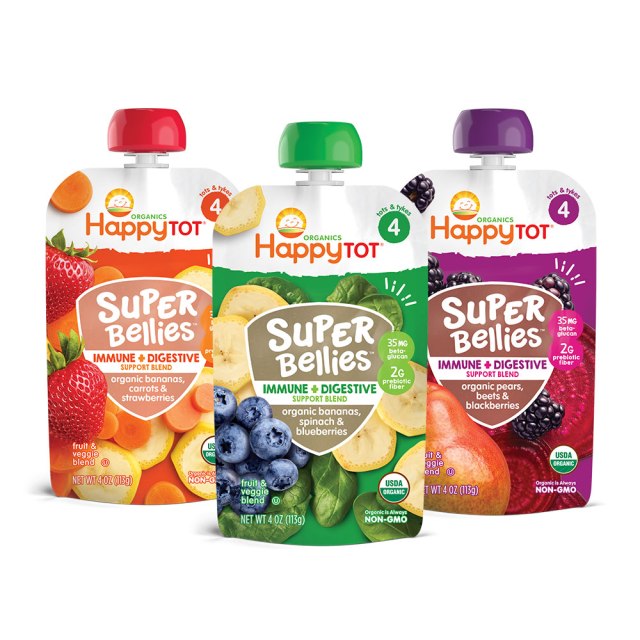
Here's a smart snack for toddlers: These nutritious pouches support the immune system and digestive health. In addition to fruits and veggies, the pouches contain 35 mg of beta-glucan and 2g of prebiotic fiber for digestive health. They're available at major retailers nationwide and come in three flavors: bananas, spinach & blueberries; bananas, carrots & strawberries; and pears, beets & blackberries.
Learn more and find your nearest store at happyfamilyorganics.com, $1.59 per pouch.
Regenerative & Organic Baby Food from Happy Family Organics
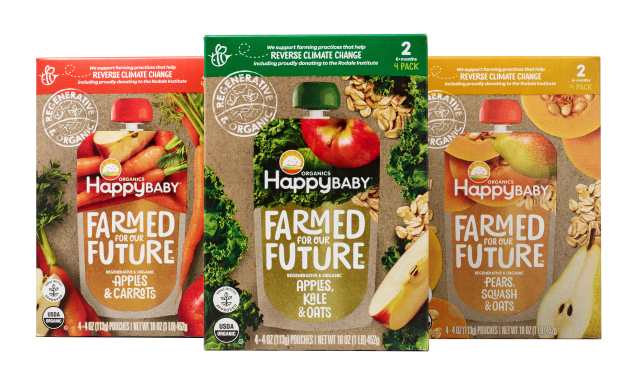
Why should we care about regenerative farming? It promotes biodiversity and can help to reverse climate change by building healthy soil that captures carbon from the atmosphere. Healthier soil, healthier food. The Happy Baby Regenerative & Organic line of food pouches debuted with three flavor combinations: apples, kale and oats; pears, squash and oats; and apples and carrots.
Available exclusively at Whole Foods, $8.49 for a four-pack. Learn more at happyfamilyorganics.com.
Fruit & Veggie Pouches from Once Upon a Farm
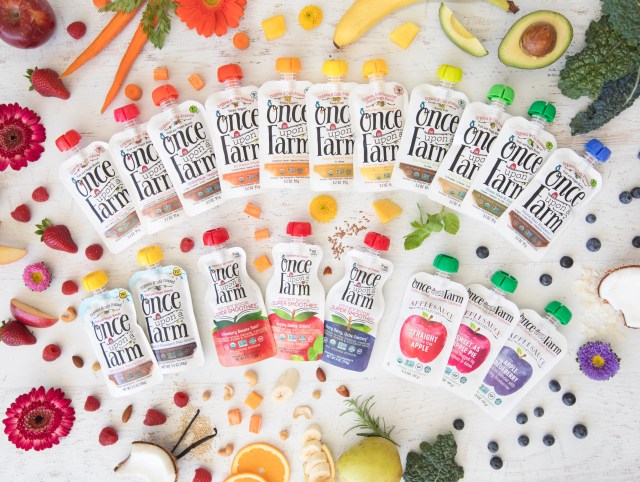
Babies love pouches, and you'll love that these organic, cold-pressed blends are sustainably grown, certified USDA Organic, Non-GMO Project Verified, and full of healthy, organic fruits and veggies. The flavors are grouped by ages and stages, so you can easily find the ones right for your child. Purchase individual flavors as 12-packs, try a variety pack, or sign up for a money-saving subscription.
Available at onceuponafarmorganics.com.
Whole Milk for Kids Age 1-5
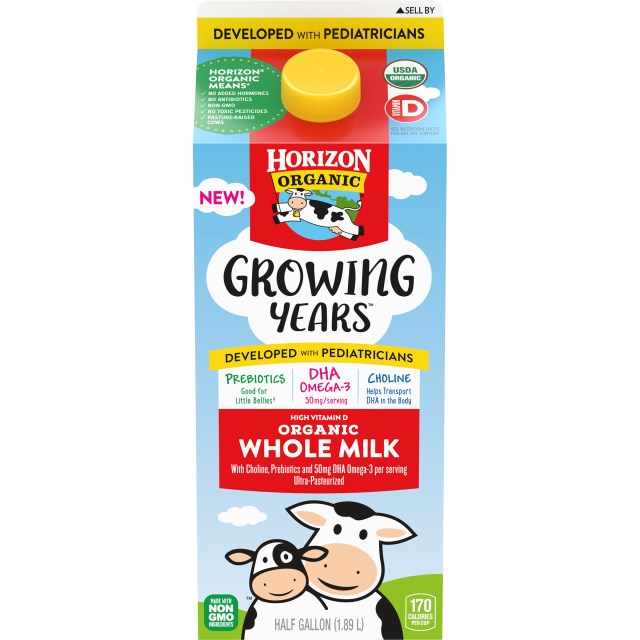
Horizon Organic has introduced Growing Years organic whole milk, developed in partnership with pediatricians to deliver key nutrients for kids age 1-5. The milk contains DHA Omega-3 for brain and eye health, choline to transport DHA throughout the body, prebiotics that feed good bacteria to the gut, and vitamin D, protein and calcium for growing bones. It's certified organic and produced by pasture-raised cows who are fed an organic, non-GMO diet and are never treated with antibiotics or added hormones.
Available nationwide at select stores for $5.99; use the store locator at horizon.com to find your nearest location.
Brain-Building Baby Food Pouches from Cerebelly

The veggie-packed baby food pouches from Cerebelly are carefully tailored to nourish baby's growing brain and body. Created by a neurosurgeon mom and a team of medical experts, the purees contain tasty ingredient combinations (such as carrot & chickpea; sweet potato & mango) that deliver protein, omega-3 DHA and the specific nutrients your baby needs for their age and developmental stage. Pick up a three-flavor variety pack at Whole Foods or sign up on the Cerebelly website for shipments every two weeks. On the site, you'll enter information about your baby's age and current developmental milestones, and Cerebelly will recommend flavors that can benefit your babe most. You choose what you like and whether you want 1-4 pouches per day.
Available at Whole Foods and cerebelly.com ($2.31-$2.89 per pouch).
Biodynamic, Organic Pouches & Applesauce from White Leaf Provisions
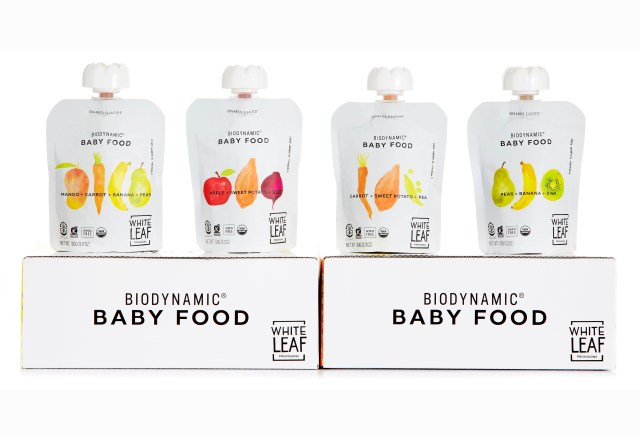
Environmentally conscious parents will love these new fruit and veggie pouches and applesauce flavors (apple + pear, apple + cinnamon) from White Leaf Provisions. The offerings from this family-run business are both biodynamic and organic. You'll feel good about the delicious snacks you're feeding your kids, as well as the recyclable packaging and earth-friendly farming methods.
Available at whiteleafprovisions.com, $17.94 for a six-pack of pouches and $7.59 for a four-pack of applesauce.
Baby Food & Toddler Bowls from Happy Family
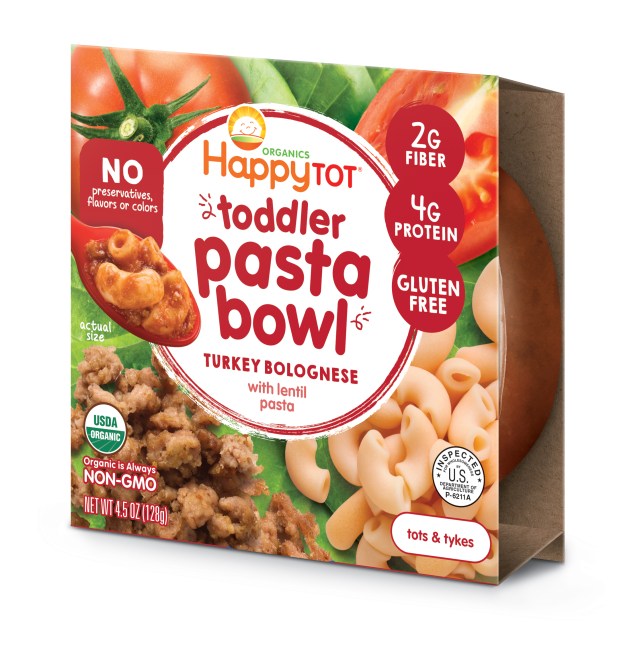
Yummy new flavors of baby food and hearty toddler bowls! Happy Baby Clearly Crafted Jars ($1.25), which feature organic ingredients and the name of the farms where ingredients are grown on each jar, now come in six new flavors: carrots; green beans; carrots & peas; pears & prunes; pears, pineapple & avocado; apples, mangos & beets. The company's Happy Tot Bowls ($2.99) are full of nutritious ingredients and contain no added sugar. The new flavors are: turkey bolognese with lentil pasta, mac & cheese with organic lentil pasta & veggie sauce, and cheesy lentils & quinoa with organic cauliflower & parmesan sauce.
Purees & Snacks from Sprout Foods
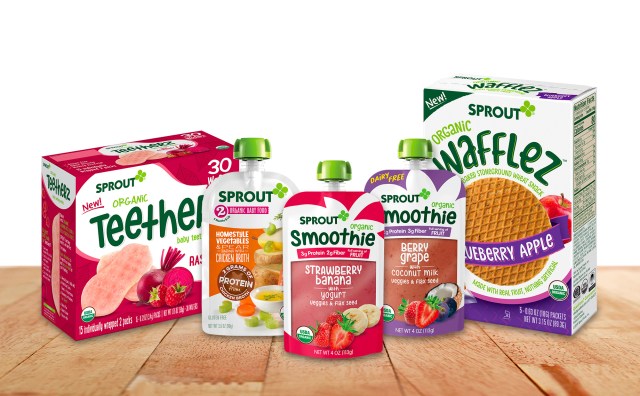
Sprout Foods, known for creating nutritious and delicious food that helps kids get their veggies and other nutrients, is debuting new pouches and snacks for both babies and toddlers. The exciting new offerings include organic waffles, quick-dissolving teething wafers, purees made with organic bone broth protein, four toddler smoothies (made with either yogurt or coconut milk) and two pouches of plant-based protein.
Available at sproutorganicfoods.com.
Freeze-Dried Baby Food from Bon Petit

This freeze-dried baby food is packed full of nutrients and other magic: It doesn't expire and is super compact and convenient for travel (even in a carry-on!). To serve, mix the powder with water, breastmilk, formula, milk or broth. Or, for older kids, add the powder to prepared meals to up their health factor. Choose from delicious and nutritious options with clever names, including: Smashing Pumpkins (Japanese pumpkins and carrots), Goldilocks Chicken Congee (millet, barley, koshihikari rice, chicken stock, celery, carrot, bok choy and Japanese pumpkin) and Under the Sardinian Sea (wild sole, Italian white beans, tomato, oregon, basil and avocado oil.
Available at bonpetitbaby.com, $17.50-$20 for a 5-pack.
YoBaby Veggie Yogurt Cups from Stonyfield Organic
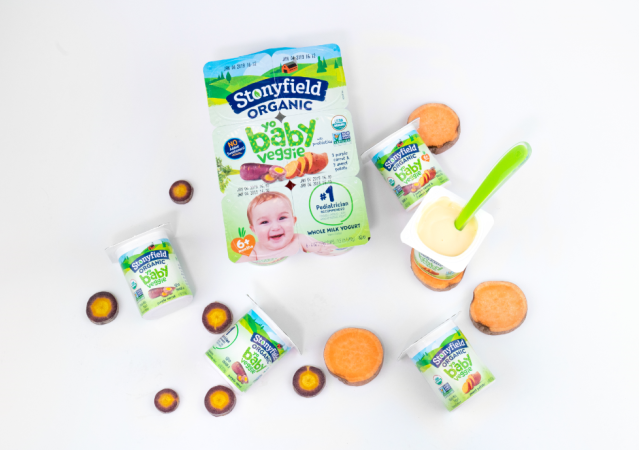
New in January 2019 are Stonyfield Organic YoBaby Veggie Yogurt cups in purple carrot and sweet potato flavors, as well as Kids Whole Milk pouches in new flavors apple cinnamon, sweet potato, and blueberry apple carrot. The baby yogurt cups include no added sweeteners and, like all of their products, are certified organic and free from artificial hormones, toxic pesticides and GMOs. Find the new lines at Target, Publix, Hannafords and many more retailers (find a store near you). Looking for something non-dairy? Try the brand's three new non-dairy fruit and veggie smoothie pouches, made with rich coconut cream as well as half a serving of fruit per pouch. The pouches are available at Whole Foods and come in tropical twist, strawbana smash and berry cherry blast flavors.
Bowls & Bites from Yummy Spoonfuls
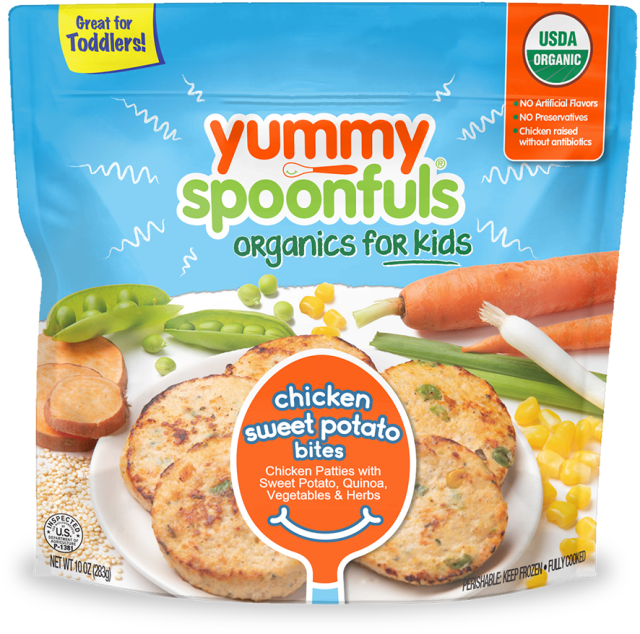
Calling all toddlers! Even picky eaters will love the flavor combinations in these bowls (veggie beef, sweet potato & chicken, pinto bean & turkey) and bites (turkey & spinach, chicken & sweet potato, chicken & broccoli). And parents will love that they're nutritious, organic and packed with protein, grains and veggies. And, best of all, they're specifically designed for toddlers' developmental and nutritional needs and don't contain added sugars, artificial preservatives, additives or artificial flavors. Launched in November 2018, the line also features bigger bowls designed for kids age 2 and up.
Available at yummyspoonfuls.com.
—Eva Ingvarson Cerise & Erin Lem
RELATED STORIES:
Eat the Rainbow with These Toddler-Friendly Healthy Recipes
21 Baby & Toddler Feeding Tools & Tips You Need
Solid Start: 10 Tips for Introducing Solids to Your Baby
